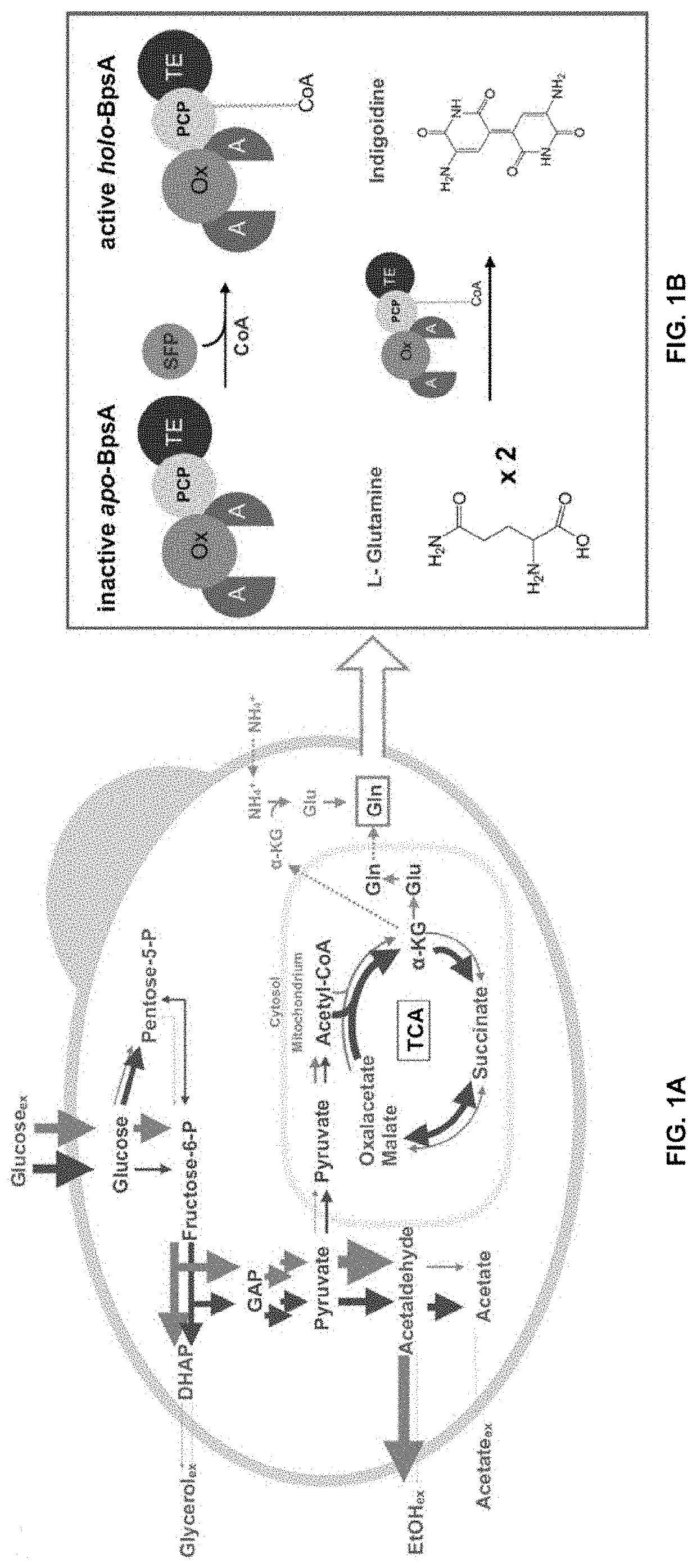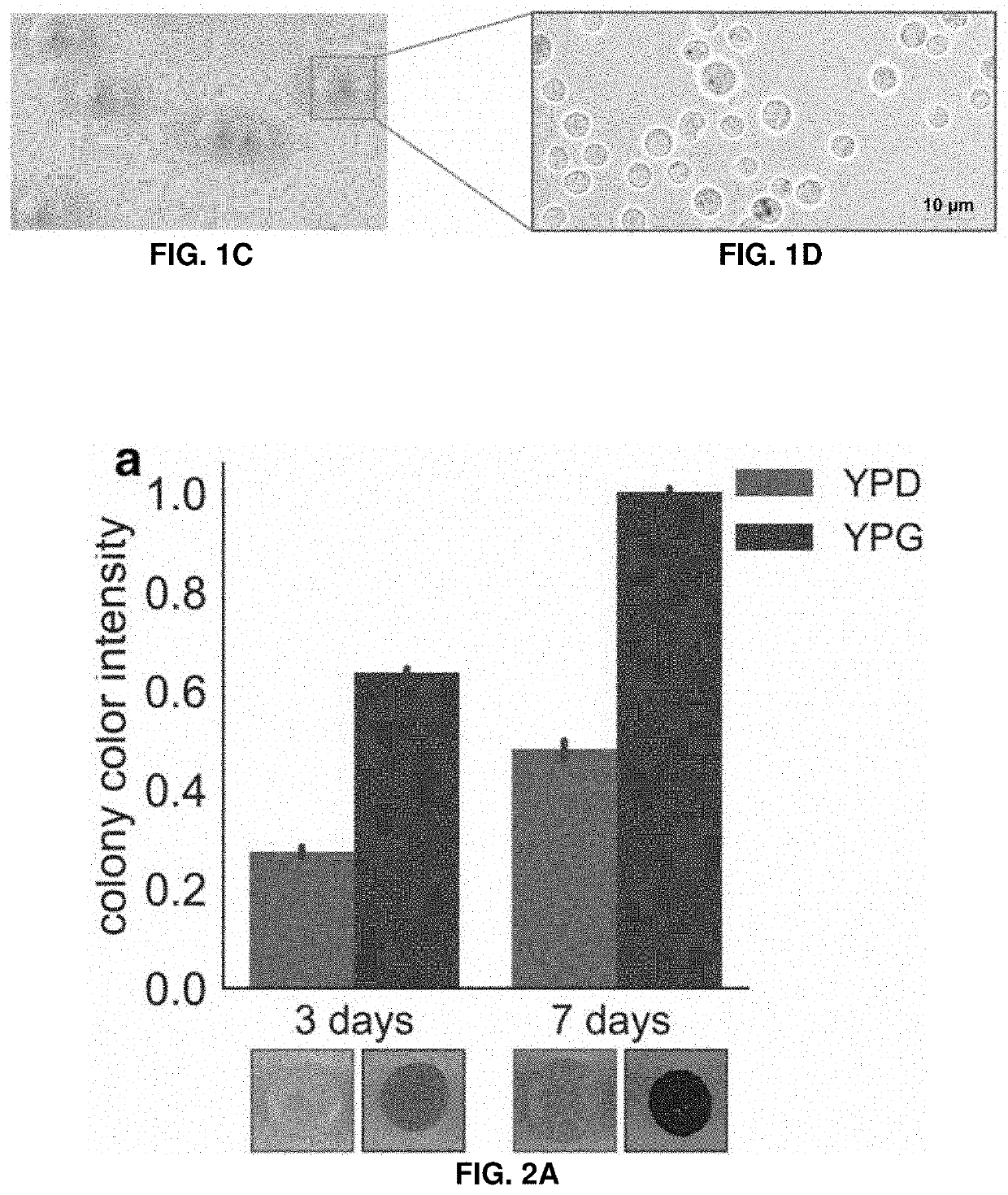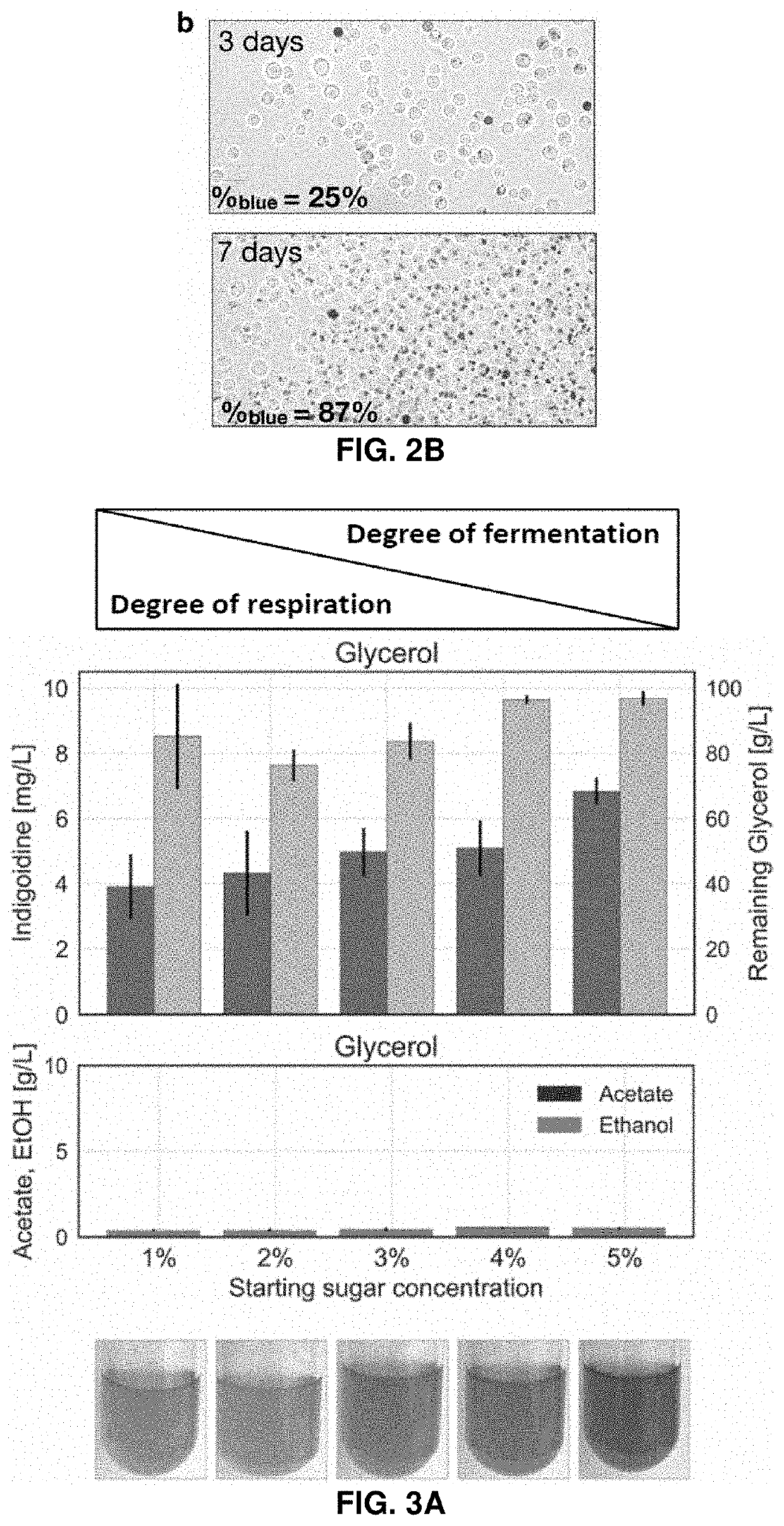Host yeast cells and methods useful for producing indigoidine
a technology of host yeast cells and indigoidine, which is applied in the direction of ligases, enzymology, biochemistry apparatus and processes, etc., can solve the problems of severe concentration gradients, unfavorable productivity effects, and severe micro-environmental inhomogeneities, and achieve high titer production
- Summary
- Abstract
- Description
- Claims
- Application Information
AI Technical Summary
Benefits of technology
Problems solved by technology
Method used
Image
Examples
example 1
Production Efficiency of the Bacterial Non-Ribosomal Peptide Indigoidine Relies on the Respiratory Metabolic State in S. cerevisiae
[0080]Background: Beyond pathway engineering, the metabolic state of the production host is critical in maintaining the efficiency of cellular production. The biotechnologically important yeast Saccharomyces cerevisiae adjusts its energy metabolism based on the availability of oxygen and carbon sources. This transition between respiratory and non-respiratory metabolic state is accompanied by substantial modifications of central carbon metabolism, which impact the efficiency of metabolic pathways and the corresponding final product titers. Non-ribosomal peptide synthetases (NRPS) are an important class of biocatalysts that provide access to a wide array of secondary metabolites. Indigoidine, a blue pigment, is a representative NRP that is valuable by itself as a renewably produced pigment.
[0081]Results: Saccharomyces cerevisiae was engineered to express ...
example 2
Expanding the Range of Heterologous Products in R. toruloides: Sustainable Bioproduction of the Non-Ribosomal Peptide Indigoidine
[0167]Non-ribosomal peptides (NRPs) constitute a diverse class of valuable secondary metabolites, with potential industrial applications including pharmaceuticals, polymers and dyes. However, the low amounts of NRPs produced from native sources and their structural complexity impede mass production by purification from native sources or by chemical synthesis. To extend the range of microbial hosts that can be used for efficient heterologous production of NRPs, we engineered the fungal host Rhodosporidium toruloides to produce the blue NRP pigment indigoidine. Using colorimetric production assays, we demonstrated the ability of R. toruloides to convert various low-cost carbon and nitrogen sources into indigoidine. We established that the colorimetric features of the product are dependent on the pH of the culture as well as the oxidation state of the molecul...
PUM
| Property | Measurement | Unit |
|---|---|---|
| temperature | aaaaa | aaaaa |
| concentration | aaaaa | aaaaa |
| concentration | aaaaa | aaaaa |
Abstract
Description
Claims
Application Information
 Login to View More
Login to View More - R&D
- Intellectual Property
- Life Sciences
- Materials
- Tech Scout
- Unparalleled Data Quality
- Higher Quality Content
- 60% Fewer Hallucinations
Browse by: Latest US Patents, China's latest patents, Technical Efficacy Thesaurus, Application Domain, Technology Topic, Popular Technical Reports.
© 2025 PatSnap. All rights reserved.Legal|Privacy policy|Modern Slavery Act Transparency Statement|Sitemap|About US| Contact US: help@patsnap.com



